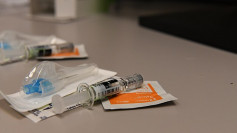As the summer season reaches its peak, the United States is witnessing an uptick in COVID-19 cases, driven by new variants and heightened travel activities. With hospitalizations up by 25% and deaths increasing by 17% since the beginning of June, according to the CDC, public health experts are sounding alarms. The emergence of two omicron subvariants, LB.1 and KP.3, is contributing to this increase, though experts like Dr. Philip Chan of Brown University suggest it may not yet constitute a new wave.
The resurgence is evident through various metrics. Wastewater surveillance, a reliable indicator of COVID-19 spread, shows rising virus levels in multiple states, including Florida, New York, California, Hawaii, and Utah. Despite the low national levels, the trend is upward, signaling potential challenges ahead.
Understanding the Impact and Taking Precautions
Dr. Chan emphasizes the importance of remaining vigilant. "We're in a totally different place at this point in the pandemic," he says, highlighting advancements in treatments and vaccines. However, the risk of long COVID remains significant with each infection, which can amplify symptoms in those already affected. This underscores the need for continued precautions.
Given the current circumstances, personal responsibility becomes paramount. With the government stepping back from enforcing preventive measures, individuals must make informed decisions to protect themselves and others. Simple actions such as handwashing, wearing well-fitting N-95 masks in crowded or high-risk settings, and staying home when sick can mitigate the spread. Dr. Chan advises, "Everyone's situation is different, so it really comes down to weighing the risks and benefits with your doctor."
Summer Travel and Social Activities
The summer season, traditionally a time for travel and social gatherings, presents additional risks for COVID-19 transmission. This year is expected to be one of the busiest for travel, which could exacerbate the spread. Experts recommend taking precautions such as masking in airports and on planes, and laying low before major trips to reduce the risk of spreading the virus to family and friends.
For those planning vacations, it's also prudent to consider the potential impact of COVID-19 on travel plans. Symptoms can disrupt vacation schedules, making it essential to take preventive measures seriously. Getting vaccinated is a critical step. Dr. Chan suggests, "If you haven't gotten a COVID vaccine since the fall of 2022, consider getting a booster now and another one in the fall to target newer variants."
Managing Symptoms and Testing
Recognizing and managing symptoms early is crucial. If you experience symptoms like fever, chills, sore throat, or nausea, it's advisable to test immediately. A negative result should be followed by a retest two days later due to the possibility of false negatives. The CDC recommends staying away from others until symptoms improve and fever subsides for at least a day.
In the event of exposure to a confirmed case, it's best to wait five days before testing and to wear a mask in public spaces during this period. For those who test positive, isolation and measures such as using air purifiers, opening windows, and maintaining distance from household members can help prevent further transmission.
Long-Term Outlook and Health Measures
The resurgence of COVID-19 serves as a reminder that the virus remains a significant public health concern. Vaccination continues to be the most effective tool in combating severe illness and transmission. For the immunocompromised and those over 65, the CDC advises timely booster shots to maintain protection levels. Dr. Chan strongly recommends getting updated vaccines as they become available.
Despite the ongoing challenges, the collective effort to follow preventive measures can help ensure that the summer remains enjoyable and safe for everyone. Planning and a few extra precautions can go a long way in preventing the virus from derailing summer activities and protecting vulnerable populations.
Staying Informed and Vigilant
As the situation evolves, staying informed through reliable sources is essential. The CDC and public health officials provide regular updates on COVID-19 trends and recommended precautions. Engaging with healthcare providers to understand personal risks and appropriate measures can further enhance safety.
While the resurgence of COVID-19 poses challenges, it also offers an opportunity to reaffirm commitment to public health practices. The balance between enjoying summer activities and maintaining safety protocols is crucial. By staying informed, taking precautions, and prioritizing vaccinations, individuals can contribute to controlling the spread of the virus and protecting community health.






